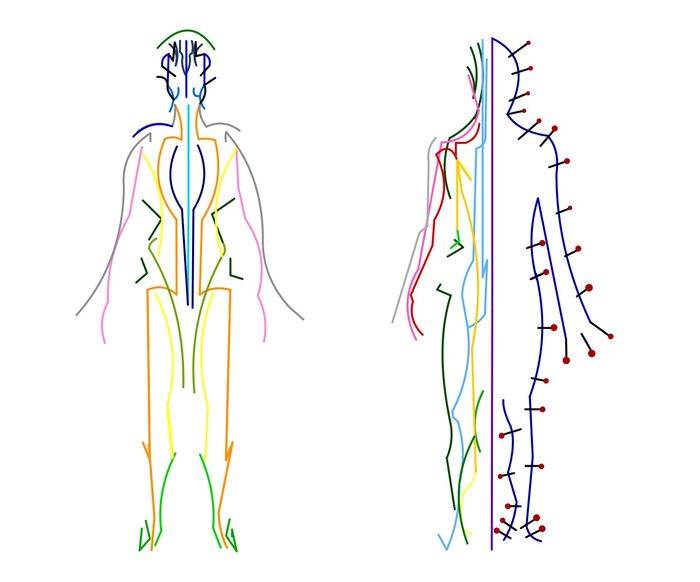The power of plants
Elizabeth Porter explores how plants have contributed to science, from heart failure to robotics

Plants have made seminal contributions to the scientific understanding of the human body, from as early as 3000 BC.
In the 17th Century, Jakob Böhme’s ‘Doctrine of Signatures’ theorised that the physical appearance of plants resembled a corresponding body part for which they were medicinally useful – walnuts assisting brain health, lungwort for respiratory issues, and eyebright for the eyes. Today, medicine continues to utilise plants, although in a more evidence-based way, with almost one quarter of pharmaceutical drugs being derived from botanicals. In the United States, the rising cost of prescription medications has led to a return to ancient herbal medicine, and we are currently in an age of rethinking and redefining the use of plants in their application to human health, climate science, and robotics.
The foxglove (Digitalis lanata) is well-known for producing digoxin (also known as digitalis), a cardiac glycoside that has been instrumental in cardiovascular medicine for over 200 years. Digoxin causes the heart to beat more strongly, while slowing down its beat, and is offered when first line treatments of heart conditions such as heart failure and chronic atrial fibrillation (a fast, irregular heartbeat) have been ineffective. Concerns over toxicity mean digoxin has gradually been replaced by other drugs, such as beta-blockers and diuretics, but it has nevertheless reduced hospitalisations and heart failure progression for many patients. Not only has the plant improved cardiovascular conditions, but efforts to prevent toxicity have improved our understanding of metabolism and methods used to measure drug concentrations in the blood, and specific antibodies have been discovered in the treatment of toxicity and poisoning.
“Willow bark (Salix) has been used since the time of Hippocrates, when it was discovered that chewing on the bark reduced fever and inflammation”
Willow bark (Salix) has been used since the time of Hippocrates (400 BC), when it was discovered that chewing on the bark reduced fever and inflammation. More modern research has found a promising anticancer effect. The ethanolic extract of willow bark (EEB) has been shown to slow cancer cell growth by inhibiting a process called epithelial to mesenchymal transition (EMT), central to cancer progression and metastasis (spread to other parts of the body). This extract works by reducing levels of proteins that cause cancer to progress (Twist1 and EGFR) and simultaneously helps to restore E-cadherin expression, important for normal cell behaviour.
Willow bark has also been effective in the long-term treatment of musculoskeletal pain such as osteoarthritis and back pain. Compounds in willow bark, such as polyphenols, flavonoids, and proanthocyanidins, can have anti-inflammatory effects. Willow bark also may have fewer adverse effects compared to NSAIDs (non-ateroidal anti-inflammatory drugs) such as ibuprofen, which have known risks of gastrointestinal and cardiovascular complications.
“Understanding the parachute response could help in the design of ‘soft’ robots, which have multiple arms and fingers with functional designs that mimic biological tissues”
The field of engineering, as well as medicine, has benefitted from the power of plants. Not only is the dandelion plant an early spring food for a variety of pollinators like bees and butterflies, it seems that research into the biomechanical ‘decisions’ behind dandelion seed dispersal could have promising applications for robotics. The dandelion parachute-like structure (pappus) opens and closes in response to humidity signals in the environment. Understanding the parachute response could help in the design of ‘soft’ robots, which have multiple arms and fingers with functional designs that mimic biological tissues. The design of these robots has been inspired by the dandelion’s movement of multiple appendages simultaneously, without relying on hard mechanical joints.
The potential of plants in science has been recognised for millennia and continues to be subject of intense research in fields from medicine to engineering. Centuries after Böhme drew a link between the healing power of plants and human anatomy, plants play a vital role in the research of medicine. With over 28,000 existing species having a recorded medicinal use, the potential for future discoveries and novel application of plants remains a powerful possibility.
Want to share your thoughts on this article? Send us a letter to letters@varsity.co.uk or by using this form.
 News / Uni offers students £55k in payouts31 October 2025
News / Uni offers students £55k in payouts31 October 2025 News / Uni error forces deeper spending cuts31 October 2025
News / Uni error forces deeper spending cuts31 October 2025 News / Students launch women’s society excluding trans women31 October 2025
News / Students launch women’s society excluding trans women31 October 2025 News / Students allowed to use AI, says new uni guidance31 October 2025
News / Students allowed to use AI, says new uni guidance31 October 2025 News / College rowing captains narrowly vote to exclude trans women31 October 2025
News / College rowing captains narrowly vote to exclude trans women31 October 2025










